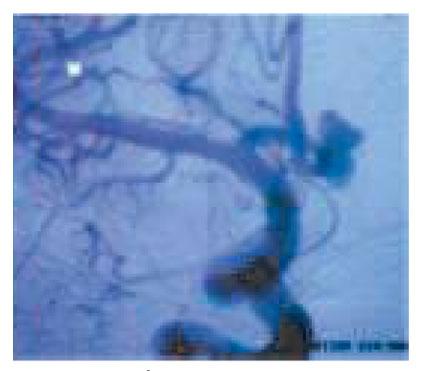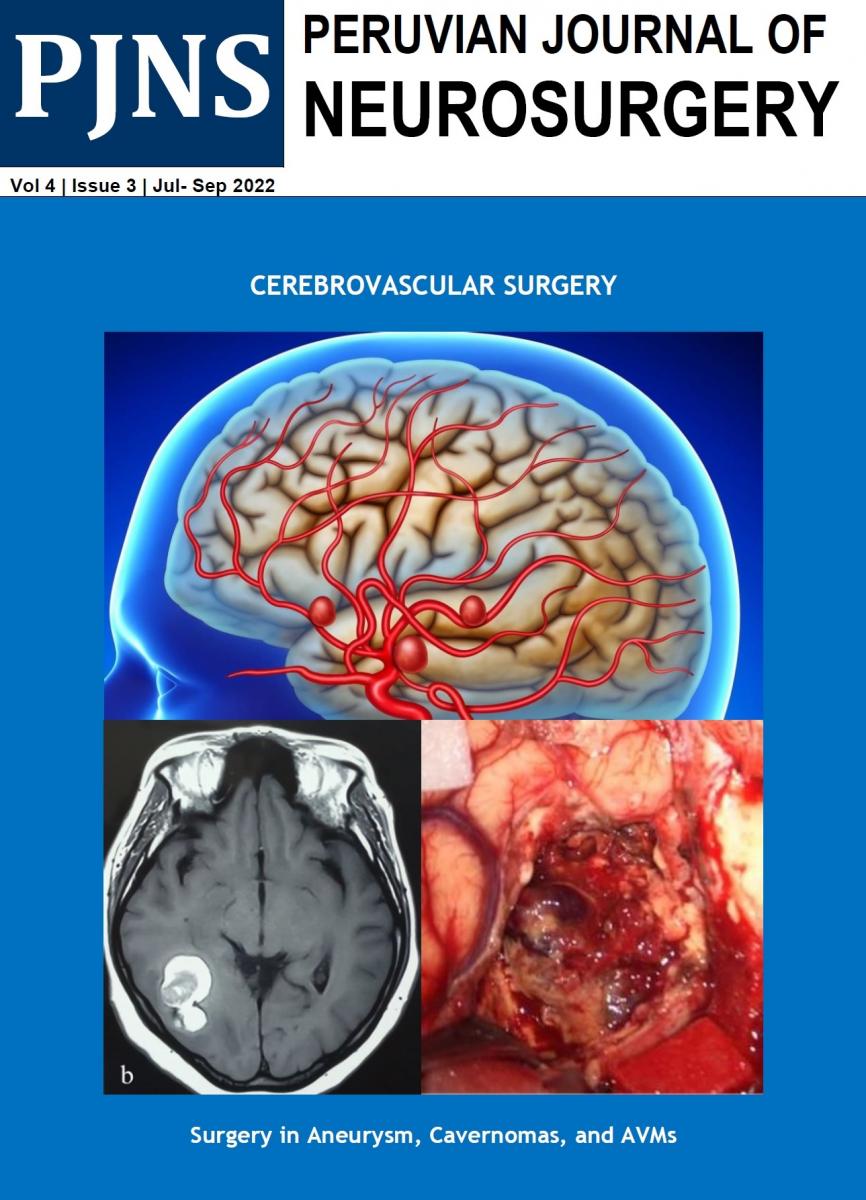Usted está aquí
Peruvian Journal of Neurosurgery
Anterior communicating artery aneurysms: Management and statistic
ABSTRACT
In this prospective study, the authors report their recent experience with 28 patients, using a combined surgical and endovascular team for the management of ACoA aneurysms from 2000 to 2007. Patients were divided into group A, which included 24 Micro surgical patients (18 of them with subarachnoid hemorrhage, group A1, and 6 with unbroken aneurysms, group A2); And group B, consisting of 4 patients treated with GDC embolization. The proposed treatment was based on the direction of the aneurysm fundus projection, the patient's physiological status, treatment risk, aneurysm neck size and Hunt and Hess classification.
The morphological results were analyzed by performing routine angiography and CT. Excellent outcome (GOS score 5) was observed in 16 (72.2%) among 22 patients with good preoperative grade. Group A1 had permanent morbidity and death rates of 22.2 and 22.2%, respectively. Among the patients in groups A2 and B, there was no death or permanent morbidity. Mortality and death rates related to the procedure were 11.1 and 11.1%, respectively for group A, 0 and 0% for group B, respectively. None of the 6 patients with
Poor preoperative grade had excellent results (GOS with score 5) or good (GOS with score 4).
The study also showed that the direction in which the fundus is projected and the subarachnoid hemorrhage appear significantly as risk factors for the micro-surgically treated groups. Improvement in overall surgical outcome includes early surgical intervention for patients with good grade, while subjects with poor grade should be actively managed and evaluated more closely with early surgery.



